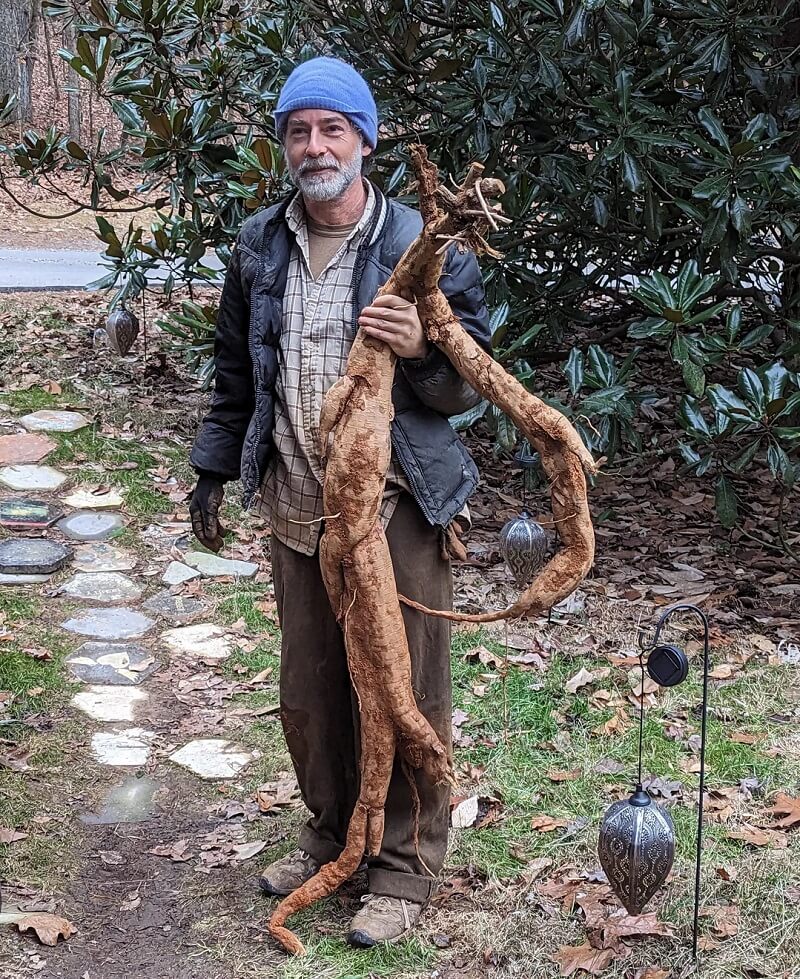This may be the biggest root you've ever seen. A Redditor posted a photo of the behemoth last year in a subreddit dedicated to Asheville, North Carolina.
"One of the reasons kudzu is so persistent and difficult to remove is the size and depth of the tubers it grows for stored energy," they wrote. "It took over an hour to extract this one. It will get dried and turned to a powder for culinary and medicinal use."

"He has slain the beast!" one commenter wrote.
Another compared it to a sentient plant from the world of Harry Potter: "Looks like a mandrake baby from herbology all grown up."
Kudzu was introduced to the United States from Asia as an ornamental vine in 1876. It was used for decades in the 20th century to control erosion, but the Department of Agriculture banned it in 1953.
It is common in the South and is problematic in Connecticut, North Dakota, and Oregon. Its large leaves help it crowd and shade out native grasses and trees, and it grows up to one foot daily.
Small infestations can be controlled by repeated weeding or cutting, but large ones require the removal of the root system, which helps the plant survive droughts.
That's par for the course with invasive species, which cost Americans tens of billions of dollars annually, but individuals and organizations are working to eradicate this and other harmful plants and wildlife. One such group is Kudzu Culture, mentioned by the poster.
🗣️ Which of these benefits is your biggest motivation in gardening?
🔘 Getting outside more 🌱
🔘 Growing healthy food 🥕
🔘 Making my yard beautiful 🏡
🔘 I don't garden 🚫
🗳️ Click your choice to see results and speak your mind
Others include Friends of the Kaw, which is dedicated to restoring a river in Kansas, and the Guernsey Conservation Volunteers, who work to remove sour fig from one of the Channel Islands.
You can help at home by choosing native plants for your yard and garden or switching to a clover lawn from a turf grass one.
These changes help the environment, encouraging wildlife and vital pollinators to live in or visit your oasis, and your bank account, saving you money on water, fertilizer, and pesticides.
"Would be great if we could develop a market for invasive species to [incentivize] removal," one commenter wrote.
Another said: "I've used kudzu starch to thicken fruit pie fillings before. Works well, though you have to use more of it than the alternatives (e.g., tapioca starch). I'd buy it again."
Join our free newsletter for cool news and cool tips that make it easy to help yourself while helping the planet.









